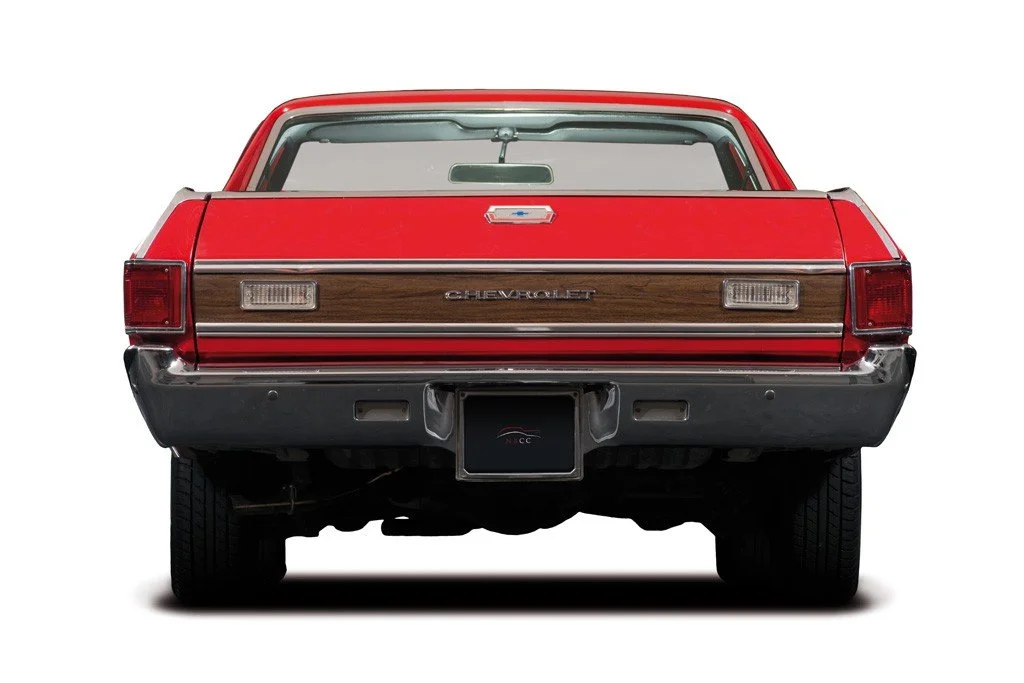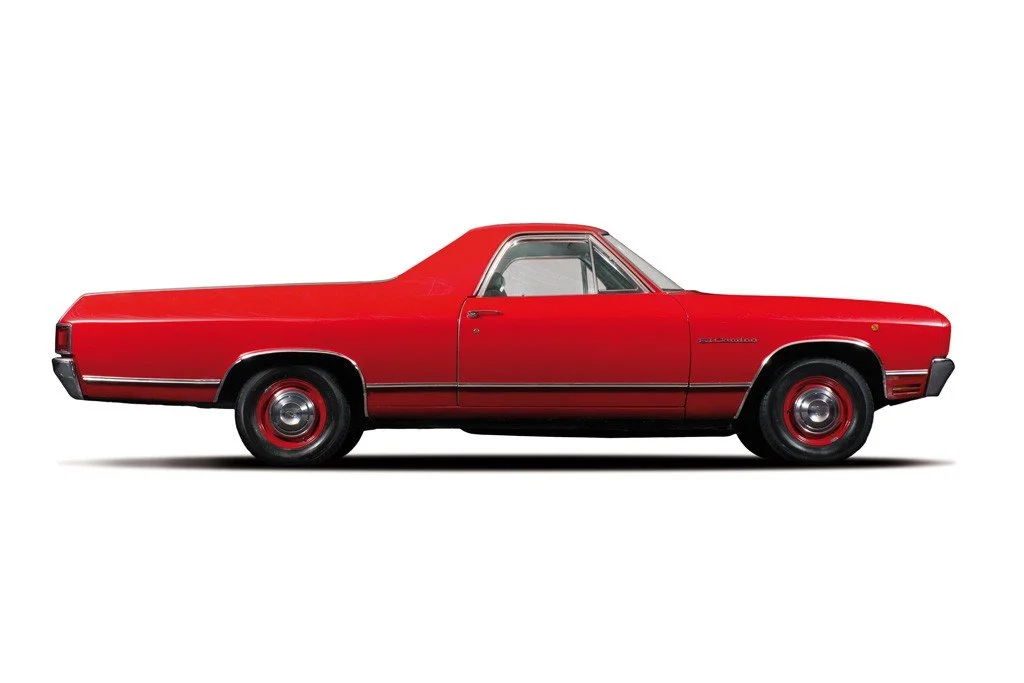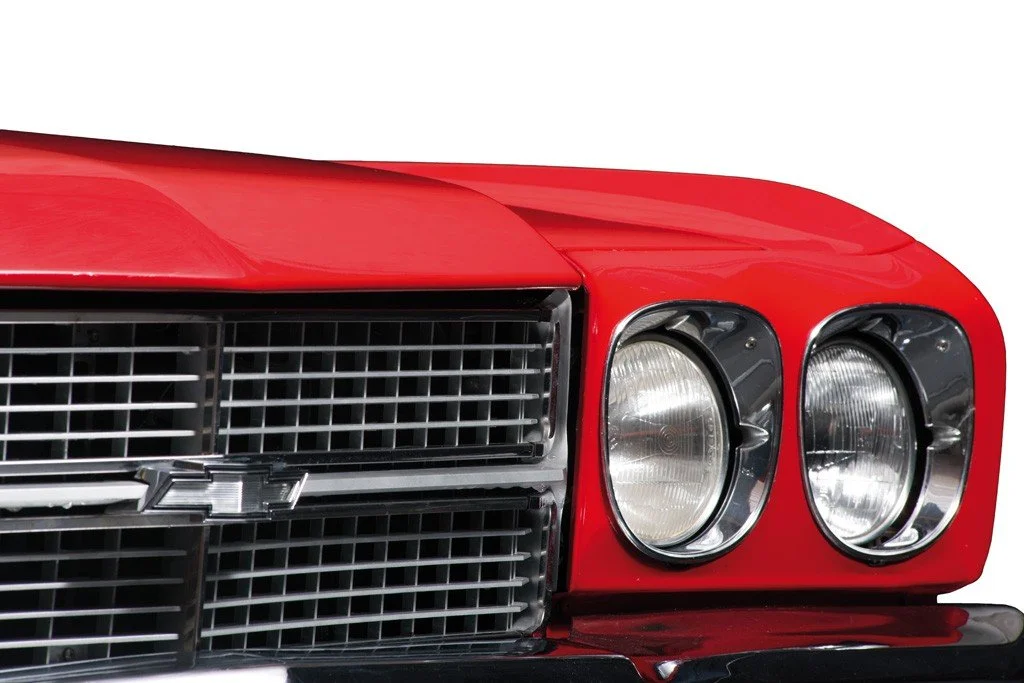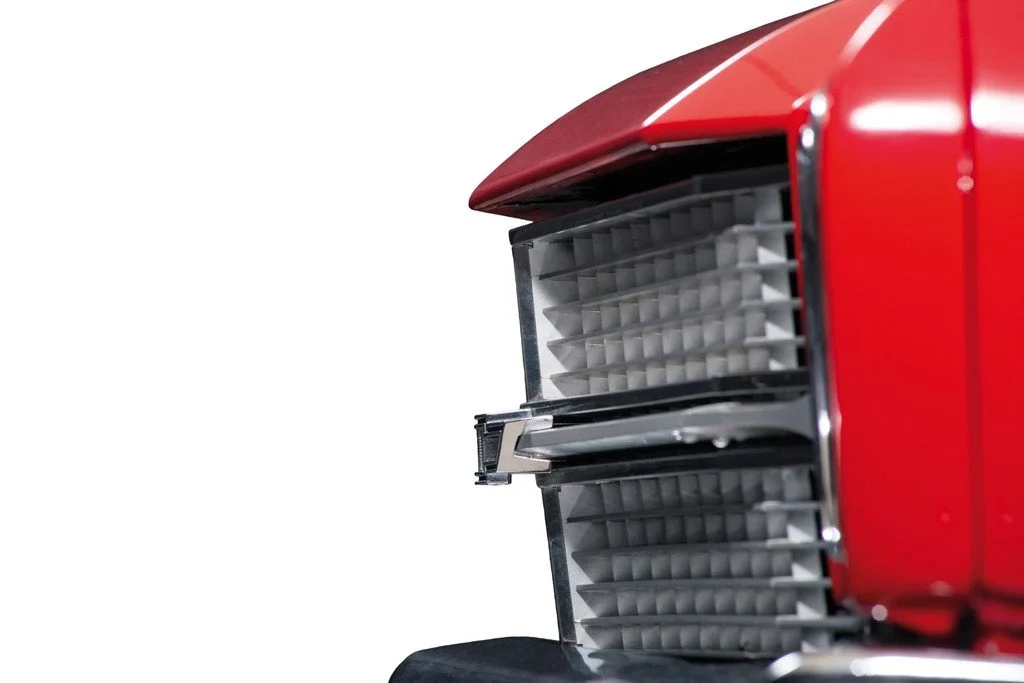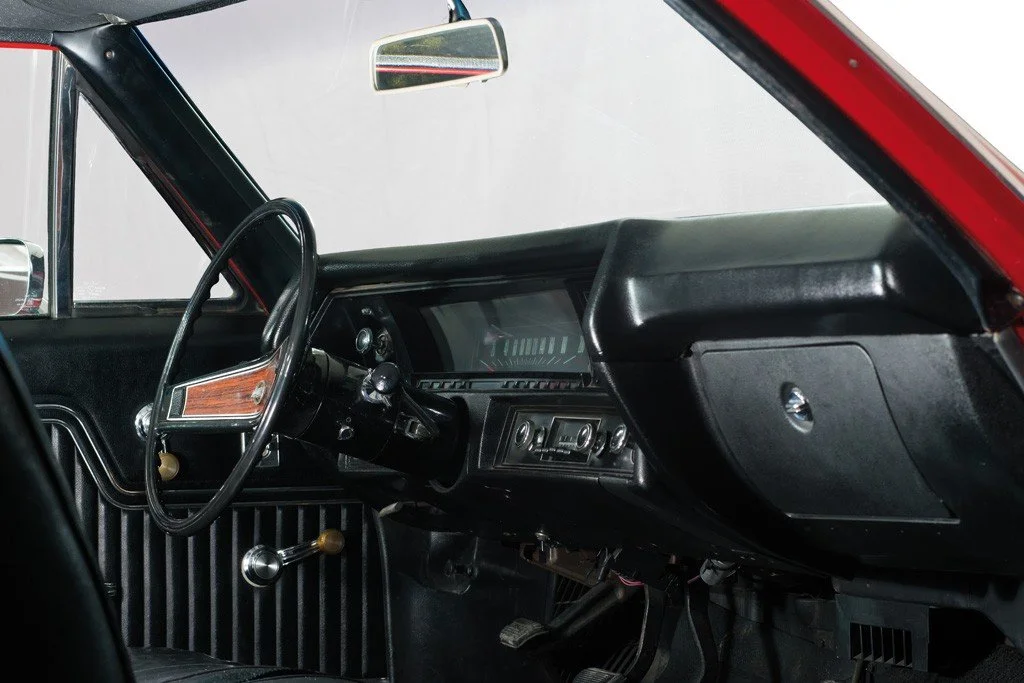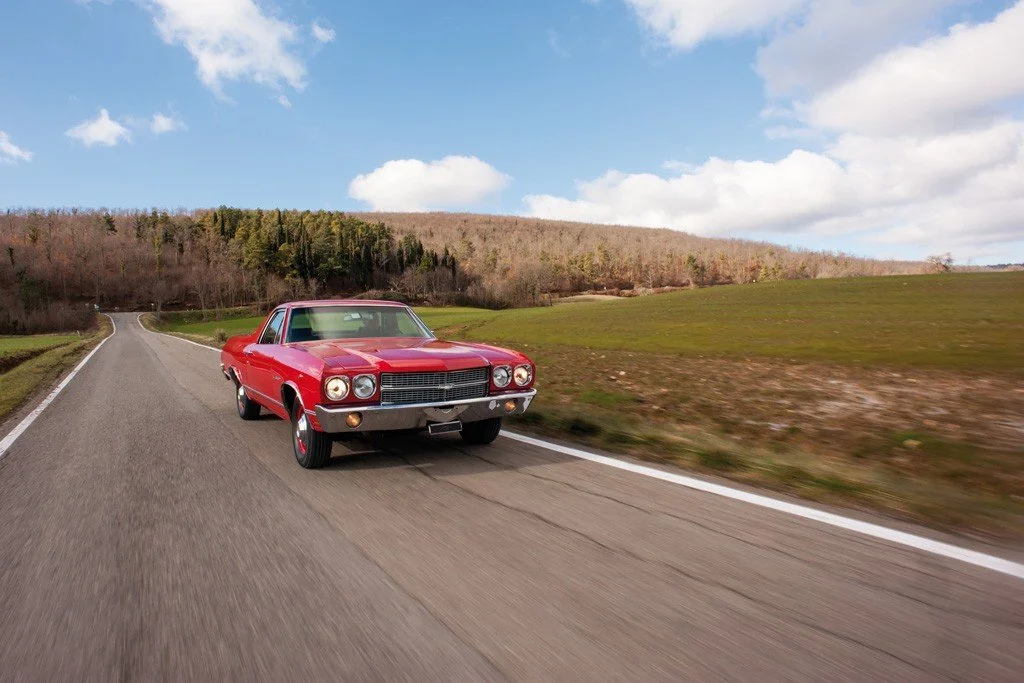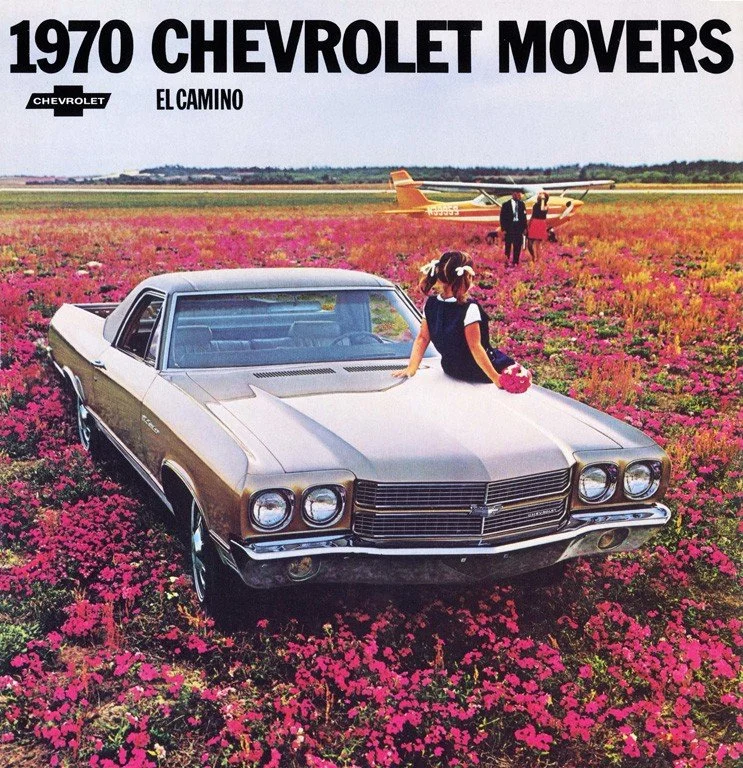-
Without a doubt the Chevrolet El Camino represented a piece of America. This is why in the Nicola Bulgari Collection, among more elegant and prestigious sedans, an example of this model can be found: half car and half pickup. The car in question is a 1970 model, ordered new in the same year, it has loyally remained in the collection to this day. It is an entry-level model in the El Camino Custom range (code 13580), with the trusty basic engine, a six cylinder inline 250 cid, and a standard manual transmission with three gears and the lever on the steering column. It was originally an export model for the European market, with speedometer in kilometers instead of miles, and was used by the Bulgari family for some years.
The basic design is also evident when looking at the wheels, with the wheel trim painted to match the body and the chrome center hub (in the “dog dish” style). This model was not issued with the classic black vinyl roof. Over a period of about 45 years this El Camino has only undergone routine maintenance work on all the various components and is completely original in all its parts. -
Company
General MotorsWheelbase
116inInterior trim
Black vinylBrakes
front and rear drumsMake
ChevroletLength
207inEngine
inline 6 250cidTires
F78x14Model
El CaminoWidth
75.7inCarburetor
1 one-barrelOriginal Price
$2,613Body style
2-door car/truckWeight
3302lbsHorsepower
155hp @ 4600rpmProduction
539Model year
1970Exterior paint
Cranberry RedTransmission
3-speed manual -
Envious of the success that Ford was having with its car/truck Ranchero that debuted in 1957, Chevrolet struck back in 1959 with its new El Camino model, based on the Impala platform. Following a three-year hiatus, the El Camino returned for 1964, as a derivative of the new intermediate-sized 1964 Chevelle. This meant that the El Camino shared its styling (including near flat front end) and most of its options and powertrains with the Chevelle.
1967 was the final year for the second generation El Camino. Little was done, or needed, to improve upon the aesthetics of the vehicle. The updates mimicked the changes made to the Chevelle. A new grille and bumper adorned the front of the vehicle. A vinyl roof could be ordered as optional equipment. A performance suspension was standard equipment for all El Caminos equipped with the powerful 396 cubic-inch engine. All other El Caminos were given air adjustable shock absorbers. This allowed the adjustment of the suspension depending on the cargo load. The 1968 El Camino received the same changes as the Chevelle and was now based on the 116 inch wheelbase platform used by the Chevelle sedan and wagon. The SS396 debuted as a new model of the El Camino and, just like in the Chevelle, came only with one of the 396 V8s. The new El Camino featured a longer hood, "vee" rear side windows, a recessed rear window (like the Chevelle) and a rakish front end.
After its big changes for 1968, the 1969 El Camino was basically carried over. The big change was that the SS396 was no longer its own model (after just one year), but was now technically an option on the regular El Camino. Exterior changes included a new grille and front bumper and rear reverse lights now located on the tailgate. Two body colors, Monaco Orange and Daytona Yellow, were exclusive to the SS models.
The 1970 El Camino received the same changes as the Chevelle including a new more blunted Vee front end and a new grille, which was black-accented on the SS. The El Camino was still available in either Base or Custom trims, but now the SS option was only available on the Custom trim. The Custom Pickup had bright trim, which ran from the front to the rear bumper about a quarter of the way up the side. The wheel wells also sported bright trim. The popular cowl induction hood was also optional on the SS. The SS option included special pattern and custom vinyl seat trim, sport mirrors, striping and badges, 15x7 Rally rims, SS emblems, black-out grille, and a choice of three of the four high performance 402 cid V8 engines. Interestingly, although the 396 engines now displaced 402 cubic inches, they were either called “396” or “Turbo-Jet.” But the key for performance buyers was the introduction of the new corporate 454 engines, the LS5 rated at 360 bhp and the mighty 450 bhp LS6. The 454 engines came only with the Turbo-Hydramatic or a close-ratio four speed manual transmission.
1972 was the final year for the third generation El Camino, with the fourth generation beginning in 1973. The fifth generation of the El Camino began in 1978, and in 1984 the production was moved to Mexico where it continued until 1987.



